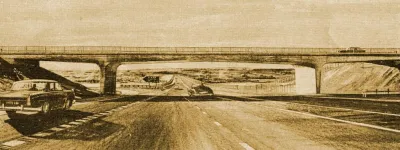The price that the GLC were willing to pay for the route reflects their high regard for it. The 1969 estimate for the cost of the route was more than £1bn, in an era when Government spending rarely mentioned "billions" at all, such was the rarity of anything that would cost so much. Land costs made up the largest part of that sum. In today's prices the equivalent would be £12.86bn, though in fact a calculation based on property price and construction inflation only tells half the story. It would now be astronomically more since many of the places Ringway 1 was to pass through were deprived in 1966 but are now much sought-after places to live.
Compensation to evictees would also be an enormous cost: it was estimated in May 1968 that some 36,000 people would have to be rehomed to make way for the road. 13,300 of those would be on the North Cross Route; 2,650 on the East, 3,200 on the West and 16,850 on the South Cross Route.
No surprise, then, that central Government (the Ministry of Transport included) was very keen to distance itself from these controversial plans. Ringway 1 alone — a relatively small part of the total mileage of the Ringway plans — would have been the most expensive scheme of public works ever undertaken in this country, and the Treasury in particular was very anxious to see the Motorway Box put to an early death.
Surprisingly, a substantial amount of it was built. The entire eastern flank is there to be driven today, and a short section in the west was opened to traffic, though in recent years has been substantially altered and is no longer recognisably a motorway. Ringway 1 is long dead and these fragments will never be linked up into a circuit now, but on road signs, traffic reports and street maps, they still carry their motorway names: West Cross Route and East Cross Route.
The following pages describe the route clockwise from the north-western corner.
Picture credits
- Artist's impressions of West Cross Route above Kensal Green Cemetary is from "New Roads in West and North Central London", GLC, 1965.
Sources
- Motorway followed railway lines to "limit intrusion" on neighbourhoods: HLG 159/1024 discusses planning of the network, including use of existing severance (such as railways) to reduce impact on urban area.
- "Cross Route" terminology: Map and list taken from Report of the Committee on London Roads, July 1959.
- Ringway 1 as "minimum solution": GLC stated that "the urban Motorway Box and the links to the radial motorways converging on London will be minimum requirements", GLC Minutes of Proceedings, 6 April 1965, pp. 347-53; referenced in Motorways In London ed. J Michael Thomson p. 106.
- No justification of R1 in GLC submission to GLDP inquiry: HLG 159/1024 outlines the purpose of each road proposal in turn, except R1.
- Design speed and service levels: HLG 159/626.
